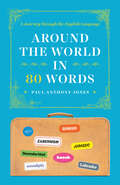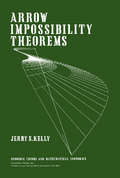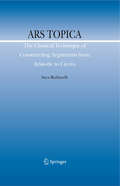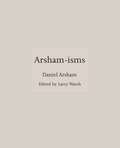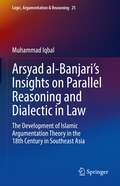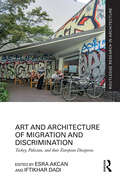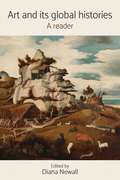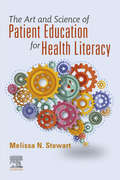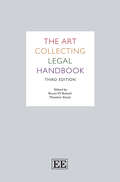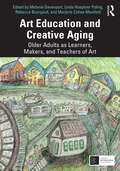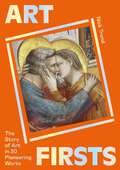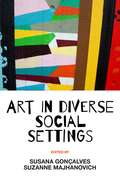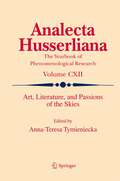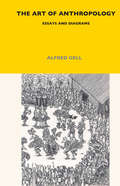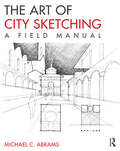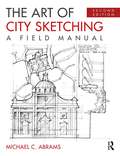- Table View
- List View
Around the World in 80 Words: A Journey through the English Language
by Paul Anthony JonesWhat makes a place so memorable that it survives forever in a word? In this captivating round-the-world tour, Paul Anthony Jones acts as your guide through the intriguing stories of how eighty places became immortalized in the English language. You’ll discover why the origins of turkeys, limericks, Brazil nuts, and Panama hats aren’t quite as straightforward as you might presume. If you’ve never heard of the tiny Czech mining town of Jáchymov—or Joachimsthal, as it was known until the late 1800s—you’re not alone, which makes its claim to fame as the origin of the word “dollar” all the more extraordinary. The story of how the Great Dane isn’t all that Danish makes the list, as does the Jordanian mountain whose name has become a byword for a tantalizing glimpse. We’ll also find out what the Philippines has given to your office inbox, what Alaska has given to your liquor cabinet, and how a speech given by a bumbling North Carolinian gave us a word for impenetrable nonsense. Surprising, entertaining, and illuminating, this is essential reading for armchair travelers and word nerds. Our dictionaries are full of hidden histories, tales, and adventures from all over the world—if you know where to look.
Around the World in 80 Words: A Journey through the English Language
by Paul Anthony JonesWhat makes a place so memorable that it survives forever in a word? In this captivating round-the-world tour, Paul Anthony Jones acts as your guide through the intriguing stories of how eighty places became immortalized in the English language. You’ll discover why the origins of turkeys, limericks, Brazil nuts, and Panama hats aren’t quite as straightforward as you might presume. If you’ve never heard of the tiny Czech mining town of Jáchymov—or Joachimsthal, as it was known until the late 1800s—you’re not alone, which makes its claim to fame as the origin of the word “dollar” all the more extraordinary. The story of how the Great Dane isn’t all that Danish makes the list, as does the Jordanian mountain whose name has become a byword for a tantalizing glimpse. We’ll also find out what the Philippines has given to your office inbox, what Alaska has given to your liquor cabinet, and how a speech given by a bumbling North Carolinian gave us a word for impenetrable nonsense. Surprising, entertaining, and illuminating, this is essential reading for armchair travelers and word nerds. Our dictionaries are full of hidden histories, tales, and adventures from all over the world—if you know where to look.
Around the World in 80 Words: A Journey through the English Language
by Paul Anthony JonesWhat makes a place so memorable that it survives forever in a word? In this captivating round-the-world tour, Paul Anthony Jones acts as your guide through the intriguing stories of how eighty places became immortalized in the English language. You’ll discover why the origins of turkeys, limericks, Brazil nuts, and Panama hats aren’t quite as straightforward as you might presume. If you’ve never heard of the tiny Czech mining town of Jáchymov—or Joachimsthal, as it was known until the late 1800s—you’re not alone, which makes its claim to fame as the origin of the word “dollar” all the more extraordinary. The story of how the Great Dane isn’t all that Danish makes the list, as does the Jordanian mountain whose name has become a byword for a tantalizing glimpse. We’ll also find out what the Philippines has given to your office inbox, what Alaska has given to your liquor cabinet, and how a speech given by a bumbling North Carolinian gave us a word for impenetrable nonsense. Surprising, entertaining, and illuminating, this is essential reading for armchair travelers and word nerds. Our dictionaries are full of hidden histories, tales, and adventures from all over the world—if you know where to look.
Around the World in 80 Words: A Journey through the English Language
by Paul Anthony JonesWhat makes a place so memorable that it survives forever in a word? In this captivating round-the-world tour, Paul Anthony Jones acts as your guide through the intriguing stories of how eighty places became immortalized in the English language. You’ll discover why the origins of turkeys, limericks, Brazil nuts, and Panama hats aren’t quite as straightforward as you might presume. If you’ve never heard of the tiny Czech mining town of Jáchymov—or Joachimsthal, as it was known until the late 1800s—you’re not alone, which makes its claim to fame as the origin of the word “dollar” all the more extraordinary. The story of how the Great Dane isn’t all that Danish makes the list, as does the Jordanian mountain whose name has become a byword for a tantalizing glimpse. We’ll also find out what the Philippines has given to your office inbox, what Alaska has given to your liquor cabinet, and how a speech given by a bumbling North Carolinian gave us a word for impenetrable nonsense. Surprising, entertaining, and illuminating, this is essential reading for armchair travelers and word nerds. Our dictionaries are full of hidden histories, tales, and adventures from all over the world—if you know where to look.
Arrow Impossibility Theorems
by Jerry S. KellyArrow Impossibility Theorems is a 10-chapter text that describes existing impossibility theorems. This book explores a number of formalizations of ethical constraints of the theorems.After an introduction to the framework and notation for Arrow impossibility theorems, this book goes on discussing some concepts and an apparatus of relations among those concepts which are important for the theorems. Other chapters present some impossibility results that serve to point out serious difficulties in some plausible escape routes from the theorems of earlier chapters. The final chapter describes important areas of research that have arisen in the collective choice field in the transition away from studying the conditions of Arrow's theorem alone to the totality of all impossibility theorems.This book is intended primarily for economists.
Ars Topica: The Classical Technique of Constructing Arguments from Aristotle to Cicero (Argumentation Library #15)
by Sara RubinelliArs Topica is the first full-length study of the nature and development of topoi, the conceptual ancestors of modern argument schemes, between Aristotle and Cicero. Aristotle and Cicero configured topoi in a way that influenced the subsequent tradition. Their work on the topos-system grew out of an interest in creating a theory of argumentation which could stand between the rigour of formal logic and the emotive potential of rhetoric. This system went through a series of developments and transformations resulting from the interplay between the separate aims of gaining rhetorical effectiveness and of maintaining dialectical standards. Ars Topica presents a comprehensive treatment of Aristotle’s and Cicero’s methods of topoi and, by exploring their relationship, it illuminates an area of ancient rhetoric and logic which has been obscured for more than two thousand years. Through an interpretation which is philologically rooted in the historical context of topoi, the book lays the ground for evaluating the relevance of the classical approaches to modern research on arguments, and at the same time provides an introduction to Greek and Roman theory of argumentation focussed on its most important theoretical achievements.
Arsham-isms (ISMs)
by Daniel ArshamA collection of compelling quotations from a rising star in contemporary art, architecture, and designThe work of renowned contemporary artist Daniel Arsham blurs the lines between art, architecture, archeology, and design. In his distinctive style, he takes ancient art works and objects from twentieth-century pop culture and casts sculptures of them in geological materials such as quartz or volcanic ash, colliding past, present, and future in haunted yet playful visions that prompt viewers to question their everyday surroundings. Gathered from interviews and other sources, Arsham-isms is a collection of lively, thought-provoking, and memorable quotations from this exciting young creative talent on a wide range of subjects—including art, architecture, film, design, pop culture, the art world, and what it means to be a globally recognized artist today.Select quotations from the book:“Art needs to be a little dangerous.”“You don’t have to own the thing to be part of it.”“This work for me is not about progress. It is about destruction and growth and where they are able to meet in the middle.”
Arsyad al-Banjari’s Insights on Parallel Reasoning and Dialectic in Law: The Development of Islamic Argumentation Theory in the 18th Century in Southeast Asia (Logic, Argumentation & Reasoning #25)
by Muhammad IqbalThis book provides an epistemological study of the great Islamic scholar of Banjarese origin, Syeikh Muhammad Arsyad al-Banjari (1710-1812) who contributed to the development of Islam in Indonesia and, in general, Southeast Asia. The work focuses on Arsyad al-Banjari’s dialectical use and understanding of qiyās or correlational inference as a model of parallel reasoning or analogy in Islamic jurisprudence. This constituted the most prominent instrument he applied in his effort of integrating Islamic law into the Banjarese society.This work studies how Arsyad al-Banjari integrates jadal theory or dialectic in Islamic jurisprudence, within his application of qiyās. The author develops a framework for qiyās which acts as the interface between jadal, dialogical logic, and Per Martin-Löf’s Constructive Type Theory (CTT). One of the epistemological results emerging from the present study is that the different forms of qiyās applied by Arsyad al-Banjari represent an innovative and sophisticated form of reasoning. The volume is divided into three parts that discuss the types of qiyās as well their dialectical and argumentative aspects, historical background and context of Banjar, and demonstrates how the theory of qiyās comes quite close to the contemporary model of parallel reasoning for sciences and mathematics developed by Paul Bartha (2010). This volume will be of interest to historians and philosophers in general, and logicians and historians of philosophy in particular.
Art and Architecture of Migration and Discrimination: Turkey, Pakistan, and their European Diasporas (Routledge Research in Architecture)
by Esra Akcan Iftikhar DadiThis book brings together essays by established and emerging scholars that discuss Pakistan, Turkey, and their diasporas in Europe. Together, the contributions show the scope of diverse artistic media, including architecture, painting, postcards, film, music, and literature, that has responded to the partitions of the twentieth century and the Muslim diasporas in Europe. Turkey and Pakistan have been subject to two of the largest compulsory population transfers of the twentieth century. They have also been the sites for large magnitudes of emigration during the second half of the twentieth century, creating influential diasporas in European cities such as London and Berlin. Discrimination has been both the cause and result of migration: while internal problems compelled citizens to emigrate from their countries, blatant discriminatory and ideological constructs shaped their experiences in their countries of arrival. Read together, the Partition emerges from the essays in Part I not as a pathology specific to the Balkans, Middle East, or South Asia, but as a central problematic of the new political realities of decolonization and nation formation. The essays in Part II demonstrate the layered histories and multiple migration paths that have shaped the experiences of Berliners and Londoners. This analysis furthers the study of modernism and migration across the borders of, not only the nation-state, but also class, race, and gender. As a result, this book will be of interest to a broad multidisciplinary academic audience including students and faculty, artists, architects and planners, as well as non-specialist general public interested in visual arts, architecture and urban literature.
Art and Architecture of Migration and Discrimination: Turkey, Pakistan, and their European Diasporas (Routledge Research in Architecture)
This book brings together essays by established and emerging scholars that discuss Pakistan, Turkey, and their diasporas in Europe. Together, the contributions show the scope of diverse artistic media, including architecture, painting, postcards, film, music, and literature, that has responded to the partitions of the twentieth century and the Muslim diasporas in Europe. Turkey and Pakistan have been subject to two of the largest compulsory population transfers of the twentieth century. They have also been the sites for large magnitudes of emigration during the second half of the twentieth century, creating influential diasporas in European cities such as London and Berlin. Discrimination has been both the cause and result of migration: while internal problems compelled citizens to emigrate from their countries, blatant discriminatory and ideological constructs shaped their experiences in their countries of arrival. Read together, the Partition emerges from the essays in Part I not as a pathology specific to the Balkans, Middle East, or South Asia, but as a central problematic of the new political realities of decolonization and nation formation. The essays in Part II demonstrate the layered histories and multiple migration paths that have shaped the experiences of Berliners and Londoners. This analysis furthers the study of modernism and migration across the borders of, not only the nation-state, but also class, race, and gender. As a result, this book will be of interest to a broad multidisciplinary academic audience including students and faculty, artists, architects and planners, as well as non-specialist general public interested in visual arts, architecture and urban literature.
Art and its global histories: A reader (Art And Its Global Histories Ser.)
by Diana NewallA varied selection of content, including excerpts, new translations, interviews with curators and artists, and art criticism. The Reader is contextualised under key themes and ideas that underpin the notion of a global art history that spans from the 1400s to present day.
The Art and Science of Patient Education for Health Literacy - E-Book
by Melissa StewartMost healthcare providers know that health literacy is a major barrier to positive health outcomes, but regardless of good intentions they continue to simply present health information rather than promote deep patient learning. With Dr. Melissa N. Stewart’s unique, research-driven approach, The Art and Science of Patient Education for Health Literacy helps you make the shift from simply presenting health information to activating deep patient learning. Revised and thoroughly updated from Dr. Stewart’s Practical Patient Literacy: The MEDAGOGY Model, The Art and Science of Patient Education for Health Literacy equips both students and healthcare providers with the skills needed to engage patients' brains in order to help them understand their conditions and promote long-lasting behavior change. Based on the neuroscience of learning, this groundbreaking book is packed with abundant tools to teach students and practitioners how to negotiate effectively with patients about what they will and won't do to maintain and improve their health. Equipped with enhanced levels of health literacy, your patients will better understand their illnesses and become their own best healthcare advocates.UNIQUE! Focus on the author’s proven patient literacy model applies a reliable methodology to promote patient health and reduce hospital readmissions.Practical, patient-centered approach emphasizes how to help patients formulate their own healthcare goals to promote their own health.In-depth discussion of pedagogy and andragogy introduces how these concepts can be used to teach different patients and accommodate their educational needs.Case Studies promote reader engagement and active learning.Guidance on how to understand the patient’s emotional state and grieving process helps you understand when and how to best communicate health information.Handy tools such as the Patient Education Hierarchy, Informational Seasons, the PITS mode, and the UPP tool add direction to individual and/or team patient education efforts.UNIQUE! Research-driven approach based on the latest findings in the neuroscience of learning.NEW! Addresses the emergence of health literacy as a crucial issue for the future of high-quality healthcare.NEW! and UNIQUE! Incorporates the author's Self-Activation Tool to help patients activate their own learning.NEW! Colorful design and numerous illustrations promote reader engagement and active learning.NEW! Chapter-ending Key Points provide a focused self-check for each chapter. NEW! Broader focus on different health professions provides information for a wide range of caregivers.
The Art Collecting Legal Handbook: Third Edition
The Art Collecting Legal Handbook, now in its third edition, is a cross-border legal guide to the ever-changing maze of rules and regulations when acquiring, moving, and sharing works of art and antiquities. This new edition has been thoroughly revised and updated, and features three thematic chapters which analyse recent market trends, the development of NFTs and their reception in the art market, and the application of indirect tax. Subsequent, national chapters cover topics such as legal remedies against fakes, forgeries and counterfeits, import and export restrictions, sanctions and the rules and practices of cultural institutions and museums. With contributions from leading experts in the field, the Handbook examines the legal framework governing the collection, preservation, and promotion of cultural goods of over 25 countries around the world, written in a user-friendly question-and-answer format which allows for easy cross-jurisdictional reference. Providing a comprehensive and practical guide, this book will be an essential resource for art collectors and their advisers, alongside dealers, galleries, and museums. It will also be beneficial for lawyers specialising in commercial law, cultural heritage and art law, and intellectual property law.
Art Education and Creative Aging: Older Adults as Learners, Makers, and Teachers of Art
by Melanie Davenport Linda Hoeptner Poling Rébecca Bourgault Marjorie Cohee ManifoldThis text explores how art education can meaningfully address the needs of older adults as learners, makers, and teachers of art in formal and informal settings. It combines perspectives of museum educators, teacher preparation professors, art therapists, teaching artists, and older artists on what is meant by Creative Aging and the ways art education can support the health and well-being of this population. Most importantly, the book discusses what the field of art education can gain from older adult learners and creators.Chapters are organized into five sections: Creatively Aging, Meeting Older Adults’ Unique Needs, Intergenerational Art Education, Engaging Older Adults With Artworks and Objects, and In Our Own Voices: Older Adults as Learners, Makers, and Teachers. Within each section, contributors investigate themes critical to art education within aging populations such as memory loss, disability, coping with life transitions, lifelong learning, intergenerational relationships, and personal narrative. The final section focuses on accounts from older adult artists/educators, offering insights and proposing new directions for growing older creatively.Though ideal for art education faculty and students in graduate and undergraduate settings, as well as art education scholars and those teaching in multigenerational programs within community settings, this book is an expansive resource for any artist, student, or scholar interested in the links among health, well-being, and arts participation for older adults.
Art Education and Creative Aging: Older Adults as Learners, Makers, and Teachers of Art
This text explores how art education can meaningfully address the needs of older adults as learners, makers, and teachers of art in formal and informal settings. It combines perspectives of museum educators, teacher preparation professors, art therapists, teaching artists, and older artists on what is meant by Creative Aging and the ways art education can support the health and well-being of this population. Most importantly, the book discusses what the field of art education can gain from older adult learners and creators.Chapters are organized into five sections: Creatively Aging, Meeting Older Adults’ Unique Needs, Intergenerational Art Education, Engaging Older Adults With Artworks and Objects, and In Our Own Voices: Older Adults as Learners, Makers, and Teachers. Within each section, contributors investigate themes critical to art education within aging populations such as memory loss, disability, coping with life transitions, lifelong learning, intergenerational relationships, and personal narrative. The final section focuses on accounts from older adult artists/educators, offering insights and proposing new directions for growing older creatively.Though ideal for art education faculty and students in graduate and undergraduate settings, as well as art education scholars and those teaching in multigenerational programs within community settings, this book is an expansive resource for any artist, student, or scholar interested in the links among health, well-being, and arts participation for older adults.
Art Firsts: The Story of Art in 30 Pioneering Works
by Nick TrendThe story of art is not always the story of art-historical 'isms' and complex academic debate. The real history is often the story of some very simple firsts - the first time an artist painted themselves, the first time someone painted a smile, the first actual place to be depicted, the first feminist artwork, the first anti-war work.Art evolves and revolutionises itself through these simple - but ground-breaking - creative leaps. Art Firsts brings together 30 of these pioneering firsts to piece together an original approach to looking at and appreciating art, as well as understanding where it has come from and how it relates to you. Each first is approachable and engaging, while each work is simply and satisfyingly explained. Every work is also fully illustrated, and its significance is shown through images of the subsequent artists directly inspired by them. Art Firsts offers a refreshing and fascinating narrative for those curious about why so-called 'masterpieces' are so important and how the story of art can be boiled down to flashes of fascinating brilliance.
Art in Diverse Social Settings
by Susana Gonçalves Suzanne MajhanovichThis edited collection examines the important and multi-varied role that art plays in today's diverse society. Art is linked to the worldviews and mind-sets from which it results and, as a complex and ambiguous product of culture and perception, it can only be truly understood from multiple perspectives. Recognising this, Art in Diverse Social Settings brings together contributions from a diverse range of authors - including scholars and artists from different countries, artistic languages and art statements - to give fresh perspectives on central questions such as: What purpose(s) do the arts serve in contemporary diverse and pluralistic societies? What are the links between art and citizenship in a 'glocal' perspective? Can aesthetics be compared to faith, therapy or civic resistance? Is art a feasible tool to prevent and contest social injustice, raise social consciousness and resistance in the political arena? Can art promote social inclusion? How can artistic practices contribute to community development? The book contains three parts including Part 1 with theoretical chapters, and Parts 2 and 3 that present exemplary case studies illustrating art as a medium for communication and intervention in professional organizations, public spaces and/or the community.
Art in Diverse Social Settings
by Susana Gonçalves Suzanne MajhanovichThis edited collection examines the important and multi-varied role that art plays in today's diverse society. Art is linked to the worldviews and mind-sets from which it results and, as a complex and ambiguous product of culture and perception, it can only be truly understood from multiple perspectives. Recognising this, Art in Diverse Social Settings brings together contributions from a diverse range of authors - including scholars and artists from different countries, artistic languages and art statements - to give fresh perspectives on central questions such as: What purpose(s) do the arts serve in contemporary diverse and pluralistic societies? What are the links between art and citizenship in a 'glocal' perspective? Can aesthetics be compared to faith, therapy or civic resistance? Is art a feasible tool to prevent and contest social injustice, raise social consciousness and resistance in the political arena? Can art promote social inclusion? How can artistic practices contribute to community development? The book contains three parts including Part 1 with theoretical chapters, and Parts 2 and 3 that present exemplary case studies illustrating art as a medium for communication and intervention in professional organizations, public spaces and/or the community.
Art, Literature, and Passions of the Skies (Analecta Husserliana #112)
by Anna Teresa TymienieckaFlashes of lightning, resounding thunder, gloomy fog, brilliant sunshine…these are the life manifestations of the skies. The concrete visceral experiences that living under those skies stir within us are the ground for individual impulses, emotions, sentiments that in their interaction generate their own ever-changing clouds. While our intellect concentrates on the discovery of our cosmic position, on the architecture of the universe, our imagination is informed by the gloomy vapors, the glimmers of fleeting light, and the glory of the skies. Reconnoitering from the soil of human life and striving towards the infinite, the elan of imagination gets caught up in the clouds of the skies. There in that dimness, sensory receptivity, dispositions, emotions, passionate strivings, yearnings, elevations gather and propagate. From the “Passions of the Skies” spring innermost intuitions that nourish literature and the arts.
The Art of Anthropology: Essays and Diagrams
by Alfred GellThe Art of Anthropology collects together the most influential of Gell's writings, which span the past two decades, with a new introductory chapter written by Gell. The essays vividly demonstrate Gell's theoretical and empirical interests and his distinctive contribution to several key areas of current anthropological enquiry. A central theme of the essays is Gel's highly original exploration of diagrammatic imagery as the site where social relations and cognitive processes converge and crystallise. Gell tracks this imagery across studies of tribal market transactions, dance forms, the iconicity of language and his most recent and groundbreaking analyses of artworks.Written with Gell's characteristic fluidity and grace and generously illustrated with Gell's original drawings and diagrams, the book will interest art historians, sociologists and geographers no less than anthropologists, challenging, as it does, established ideas about exchange, representation, aesthetics, cognition and spatial and temporal processes.
The Art of Anthropology: Essays and Diagrams (London School Of Economics Monographs On Social Anthropology Ser. #Vol. 67)
by Alfred GellThe Art of Anthropology collects together the most influential of Gell's writings, which span the past two decades, with a new introductory chapter written by Gell. The essays vividly demonstrate Gell's theoretical and empirical interests and his distinctive contribution to several key areas of current anthropological enquiry. A central theme of the essays is Gel's highly original exploration of diagrammatic imagery as the site where social relations and cognitive processes converge and crystallise. Gell tracks this imagery across studies of tribal market transactions, dance forms, the iconicity of language and his most recent and groundbreaking analyses of artworks.Written with Gell's characteristic fluidity and grace and generously illustrated with Gell's original drawings and diagrams, the book will interest art historians, sociologists and geographers no less than anthropologists, challenging, as it does, established ideas about exchange, representation, aesthetics, cognition and spatial and temporal processes.
The Art of City Sketching: A Field Manual
by Michael AbramsThe Art of City Sketching: A Field Manual guides you through the laborious and sometimes complex process of sketching what you see in the built environment so that you can learn to draw what you imagine. Illustrated with hundreds of drawings by students and professionals of cityscapes around Europe and the United States, the book helps you develop your conceptual drawing skills so that you can communicate graphically to represent the built environment. Short exercises, projects, drawing tips, step-by-step demonstrations, and composition do's and don'ts make it easy for you to get out into the city and experiment in your own work. Author Michael Abrams uses his experience as a field sketching instructor, to show you that by drawing, you can discover, analyze, and comprehend the built environment.
The Art of City Sketching: A Field Manual
by Michael AbramsThe Art of City Sketching: A Field Manual guides you through the laborious and sometimes complex process of sketching what you see in the built environment so that you can learn to draw what you imagine. Illustrated with hundreds of drawings by students and professionals of cityscapes around Europe and the United States, the book helps you develop your conceptual drawing skills so that you can communicate graphically to represent the built environment. Short exercises, projects, drawing tips, step-by-step demonstrations, and composition do's and don'ts make it easy for you to get out into the city and experiment in your own work. Author Michael Abrams uses his experience as a field sketching instructor, to show you that by drawing, you can discover, analyze, and comprehend the built environment.
The Art of City Sketching: A Field Manual
by Michael C. AbramsThe Art of City Sketching: A Field Manual guides readers through the process of freehand architectural sketching and explains orthographic, diagrammatic, three-dimensional, and perceptual-type drawings. The book presents hundreds of drawings of historic buildings and urban spaces, examples, and exercises, which help readers develop their drawing skills and employ sketching as an analytical tool. The book is divided into three parts, based on the reader’s skill level: beginner, intermediate, and advanced. As an architect and field sketching instructor, the author shows that through drawing the reader can discover, analyze, and comprehend the built environment. The new edition of The Art of City Sketching expands on the drawing techniques of the previous version by adding new drawing examples, exercises, and two new chapters—Chiaroscuro and Storyboard. New drawing tips, demonstrations, and composition "do’s and don’ts" will support readers when they illustrate their viewpoint of the city by using simple drawing tools. The lessons in this book will allow readers to mix method with imagination and sensibility.
The Art of City Sketching: A Field Manual
by Michael C. AbramsThe Art of City Sketching: A Field Manual guides readers through the process of freehand architectural sketching and explains orthographic, diagrammatic, three-dimensional, and perceptual-type drawings. The book presents hundreds of drawings of historic buildings and urban spaces, examples, and exercises, which help readers develop their drawing skills and employ sketching as an analytical tool. The book is divided into three parts, based on the reader’s skill level: beginner, intermediate, and advanced. As an architect and field sketching instructor, the author shows that through drawing the reader can discover, analyze, and comprehend the built environment. The new edition of The Art of City Sketching expands on the drawing techniques of the previous version by adding new drawing examples, exercises, and two new chapters—Chiaroscuro and Storyboard. New drawing tips, demonstrations, and composition "do’s and don’ts" will support readers when they illustrate their viewpoint of the city by using simple drawing tools. The lessons in this book will allow readers to mix method with imagination and sensibility.
